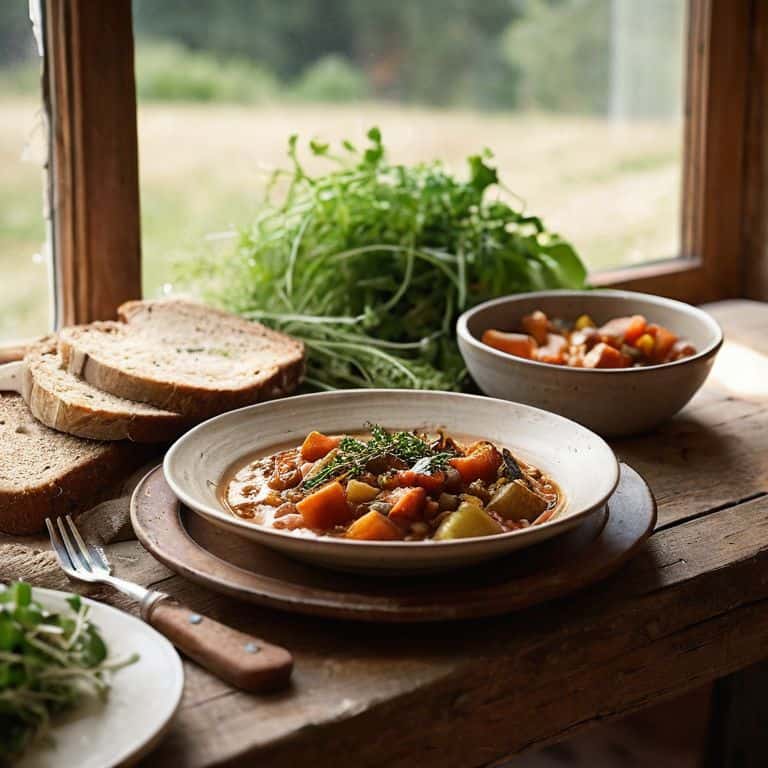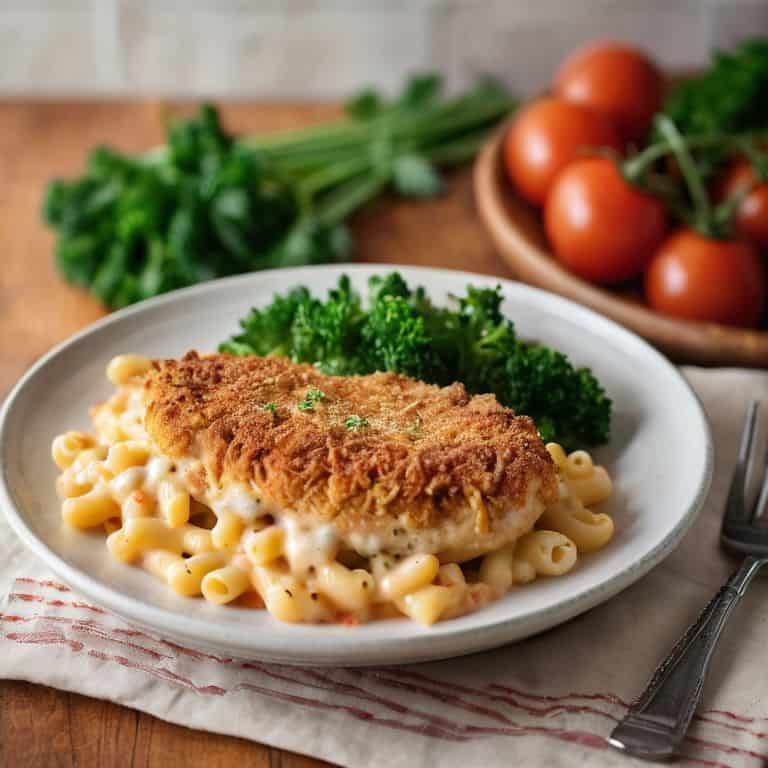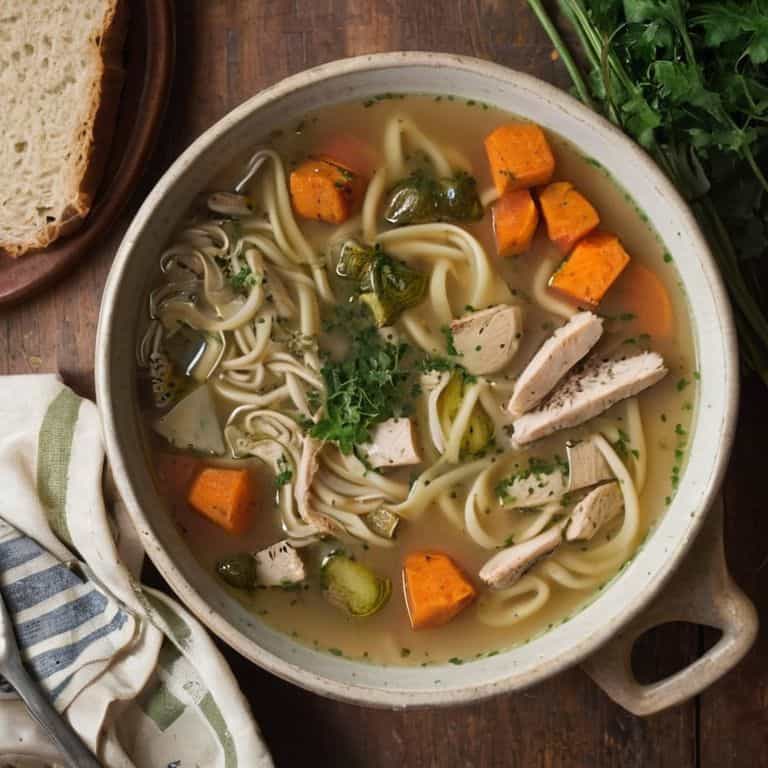I still remember the days when I thought healthy comfort food was an oxymoron. As a former clinical dietitian, I used to believe that nourishing your body meant sacrificing flavor and satisfaction. But, one day, I stumbled upon a game-changing truth: the healthiest ingredient is indeed joy. I realized that depriving ourselves of our favorite comfort foods only leads to frustration and disappointment. It’s time to break free from the restrictive mentality and rediscover the joy of eating. For me, it all started with a simple question: what if I could create healthy versions of my favorite comfort foods that not only nourish my body but also satisfy my cravings?
As someone who’s passionate about trail running and visiting farmers’ markets, I’ve learned that healthy comfort food is not just about adding nutrients, but also about savoring the experience. In this article, I promise to share my personal story, along with practical tips and recipes, to help you create deliciously healthy twists on your favorite comfort foods. I’ll show you how to make healthy eating a joyful and achievable experience, without feeling deprived or restricted. My goal is to empower you to nourish your body and honor your cravings, proving that healthy food can be the food you desire most. Get ready to indulge in the comfort foods you love, guilt-free, and discover a new way of eating that’s both nourishing and delicious.
Table of Contents
Recipe Details
Ingredients
- 1 cup whole wheat pasta (such as penne or fusilli)
- 2 cups mixed vegetables (e.g., broccoli, carrots, bell peppers)
- 1 cup lean ground turkey (90% lean)
- 1/2 cup low-fat cheese (shredded)
- 1/4 cup olive oil (extra virgin)
- 2 cloves garlic (minced)
- 1 tsp dried oregano (fresh or dried)
- Salt and pepper (to taste)
Tools & Supplies
- Large pot
- Colander
- Large skillet
- Cutting board
- Measuring cups and spoons
Recipe Instructions
Step 1
First, let’s start with a classic comfort food recipe that I just can’t get enough of: creamy, dreamy mac and cheese. To give it a healthy twist, we’re going to use a combination of whole wheat pasta and a variety of colorful vegetables to add fiber, vitamins, and minerals. Begin by preheating your oven to 375°F (190°C) and cooking your whole wheat pasta according to the package instructions until it’s al dente.
Step 2
While your pasta is cooking, let’s work on the sauce. In a large saucepan, heat a couple of tablespoons of olive oil over medium heat. Add in some diced onions and sauté until they’re translucent and fragrant, which should take about 5 minutes. This will add a depth of flavor to your dish without adding extra salt or sugar.
Step 3
Next, it’s time to create the creamy sauce. Sprinkle a pinch of salt and pepper over the onions, then add in a mixture of low-fat milk and grated cheddar cheese. Stir until the cheese is melted and the sauce is smooth, which should take about 5-7 minutes. To give it an extra boost of nutrition, I like to add in some steamed broccoli that’s been blended into the sauce for an extra dose of vitamins and antioxidants.
Step 4
Now that our sauce and pasta are ready, it’s time to combine them. In a large mixing bowl, combine the cooked pasta, cheesy sauce, and a handful of chopped fresh herbs like parsley or basil. Mix everything together until the pasta is well coated, then transfer it to a baking dish and top with a sprinkle of grated cheese and a few extra herbs for garnish.
Step 5
The final step is to add some extra crunch and flavor to our mac and cheese. I like to use a mixture of whole wheat breadcrumbs and grated Parmesan cheese to create a crispy topping. Simply mix the two ingredients together in a small bowl, then sprinkle them evenly over the top of the mac and cheese. Drizzle with a little bit of olive oil and bake in the oven for about 20-25 minutes, or until the top is golden brown and the sauce is bubbly.
Step 6
Once your mac and cheese is ready, remove it from the oven and let it cool for a few minutes before serving. I like to serve it in individual portions to make it easier to control the amount of food you’re eating, and to make it feel like a guilt-free indulgence. You can also customize it to your tastes by adding in other ingredients like cooked bacon, diced ham, or a sprinkle of diced tomatoes. Enjoy!
Healthy Comfort Food

As I delve into the world of comfort food, I’m reminded that it’s all about elevating classic recipes with a nutritious twist. Take baked chicken parmesan, for instance – a simple swap to whole wheat breadcrumbs and a lighter breading process can make all the difference. I also love exploring low fat mashed potato alternatives, like using cauliflower or sweet potatoes, to reduce the calorie count without sacrificing flavor.
When it comes to comfort food, guilt free mac and cheese is often a pipe dream, but I’m here to tell you it’s achievable. By using whole wheat lasagna noodles and a blend of part-skim ricotta and reduced-fat cheddar, you can create a dish that’s both creamy and nutritious. I’ve found that adding some hidden veggies, like steamed spinach or pureed butternut squash, can boost the nutritional value of this classic comfort food.
For more inspiration, I recommend checking out some of my favorite healthy comfort food blogs, which showcase creative takes on traditional recipes. You can also find plenty of comfort food nutrition facts online, which can help you make informed decisions about the dishes you love. By embracing these small changes, you can enjoy your favorite comfort foods while still nourishing your body.
Baked Chicken Parmesan Recipes Revamped
I just love a good chicken parmesan, and I’m excited to share my revamped baked version with you. By using whole wheat breadcrumbs and baking instead of frying, we can make this classic comfort food a nutritional powerhouse. My recipe adds an extra boost of nutrients with a side of roasted vegetables, making it a well-rounded and satisfying meal.
I’ve also experimented with different seasonings and spices to give it an extra kick of flavor, so you can indulge in the crispy, cheesy goodness without any guilt. With a few simple tweaks, this baked chicken parmesan recipe becomes a healthy comfort food option that’s perfect for a weeknight dinner or a special occasion.
Guilt Free Mac and Cheese Options
For me, mac and cheese is the ultimate comfort food – it’s all about creamy, cheesy goodness. But, I know it can be a guilt trip waiting to happen. That’s why I love experimenting with guilt-free mac and cheese options. I’ve found that using whole wheat pasta and loading up on veggies like spinach and bell peppers can add nutrients without sacrificing flavor.
My favorite twist? Adding some roasted butternut squash to the cheese sauce for an extra boost of vitamin A and fiber. It may sound unusual, but trust me, it’s a game-changer. The key is to focus on adding nutrients, not just removing calories. By making a few simple swaps, you can indulge in this creamy classic without any of the guilt.
Nourishing Your Way: 5 Essential Tips for Guilt-Free Comfort Food

- Focus on Whole Food Ingredients: Ditch the processed and packaged foods, and opt for whole, unprocessed ingredients to create comfort food that’s both nourishing and delicious
- Spice it Up with Herbs and Spices: Instead of relying on salt and sugar for flavor, get creative with herbs and spices to add depth and warmth to your comfort food dishes
- Healthy Fats are Your Friend: Incorporate healthy fats like avocado, nuts, and olive oil into your comfort food recipes to add creaminess, flavor, and a boost of nutrition
- Make it Plant-Based: Don’t be afraid to get creative with plant-based ingredients like vegetables, legumes, and whole grains to create comforting, satisfying dishes that are also good for you
- Indulge in Moderation: Remember, comfort food is all about balance – allow yourself to indulge in your favorite treats, but do so in moderation, and focus on savoring each bite to make the experience even more enjoyable
Nourishing Your Way: 3 Key Takeaways
Healthy comfort food is not an oxymoron – by focusing on adding nutrients and using whole ingredients, you can create deliciously satisfying meals that nourish your body and soul
Classic comfort foods like mac and cheese and chicken parmesan can be revamped to be guilt-free, using creative twists like vegetable-based sauces and whole grain breading
By embracing the joy of cooking and exploring new flavors, you can break free from restrictive meal plans and cultivate a positive relationship with food, making healthy eating a sustainable and enjoyable lifestyle choice
Redefined Comfort
Healthy comfort food isn’t about erasing the foods that bring us joy, but about embracing them in a way that nourishes both our bodies and our souls.
Laura Paskal
Nourishing Your Body and Soul

As we’ve explored the world of healthy comfort food, it’s clear that nourishing your body doesn’t have to mean sacrificing flavor or satisfaction. From guilt-free mac and cheese options to revamped baked chicken parmesan recipes, we’ve seen that with a few simple tweaks, our favorite comfort foods can become nutrient-dense powerhouses. By focusing on adding whole, nutrient-rich ingredients rather than just cutting calories, we can create dishes that are not only delicious but also deeply satisfying.
So, the next time you’re craving a warm, comforting bowl of goodness, remember that you have the power to transform your favorite comfort foods into healthy, wholesome meals. Don’t be afraid to get creative and make those guilty pleasures actually good for you – your body and soul will thank you. As you continue on your journey to nourish your body with healthy comfort food, I hope you’ll join me in embracing the idea that healthy and delicious are not mutually exclusive, but rather the perfect pair.
Frequently Asked Questions
What are some healthy alternatives to traditional comfort food ingredients that won't compromise on flavor?
I love swapping out heavy cream for cashew cream or Greek yogurt in mac and cheese, and using whole wheat breading for chicken parmesan – it’s all about adding nutrients, not subtracting flavor!
How can I ensure my comfort food dishes are not only delicious but also provide a good balance of nutrients?
To ensure your comfort food dishes are both delicious and nutritious, focus on adding nutrient-dense ingredients rather than just removing calories. I like to think of it as ‘nourishing with intention’ – by incorporating wholesome elements like lean proteins, vibrant veggies, and whole grains, you can create comforting meals that satisfy both your taste buds and your body’s needs.
Are there any specific cooking methods or techniques that can make comfort foods healthier without sacrificing their comforting appeal?
Absolutely, I’m all about tweaking cooking methods to boost nutrition without ditching flavor! Techniques like baking, grilling, or sautéing can be total game-changers for comfort foods, allowing us to reduce excess oil and add more veggies, while still keeping that cozy feel.
